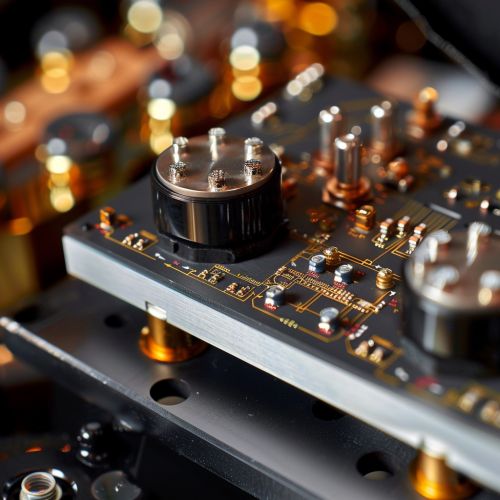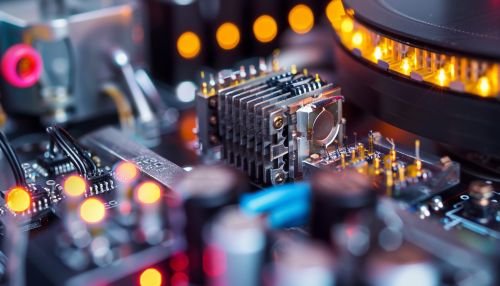Transducer
Definition and Types
A transducer is a device that converts one form of energy to another. Energy types include (but are not limited to) mechanical, electrical, electromagnetic (including light), chemical, acoustic or thermal energy. While the term transducer commonly implies the use of a sensor/detector, any device which converts energy can be considered a transducer. Transducers are widely used in measuring instruments, robotics, and control systemsTransducers.
Transducers can be categorized into two broad categories: active and passive. An active transducer is one that does not require any power source for its operation. It produces an output signal in the form of some variation in resistance, capacitance or any other electrical parameter, which is then converted to a readable form by an auxiliary device. On the other hand, a passive transducer requires an external power source for its operation, which is called an excitation signal. The output signal is produced due to the variations in the physical parameter to be measured.


Principles of Operation
The operation of a transducer involves the conversion of one form of energy into another form. This process can be explained through various principles of physics that govern the behavior of the elements within the transducer. Some of these principles include:
- Piezoelectric Effect: Some materials generate electric charge when subjected to mechanical stress. This principle is used in piezoelectric transducers to convert mechanical stress into an electrical signal.
- Hall Effect: When a current-carrying conductor is placed into a magnetic field, a voltage is generated perpendicular to both the current and the field. This principle is used in Hall effect transducers.
- Photoelectric Effect: Light photons can cause electrons to be emitted from a material. This principle is used in photoelectric transducers.
- Thermoelectric Effect: A voltage is created when a temperature difference exists between two dissimilar metal junctions. This principle is used in thermocouples.
Applications
Transducers find application in numerous fields, including engineering, medicine, and robotics. Some of the key applications include:
- Measurement and Control Systems: Transducers are used in electronic measurement and control systems where they convert physical quantities into electrical signals which are easy to handle and transmit.
- Medical Applications: In the medical field, transducers are used in various diagnostic systems such as ultrasound and MRI.
- Telecommunications: In telecommunications, transducers are used in devices like microphones and antennas to convert sound waves into electrical signals and vice versa.
- Industrial Applications: Transducers are used in various industrial applications for controlling and monitoring of machinery, equipment and processes.
Advantages and Disadvantages
Like any other device, transducers have their advantages and disadvantages. Some of the advantages include:
- Versatility: Transducers can convert various types of energy, making them versatile for different applications.
- Sensitivity: Transducers can be very sensitive to the energy they are designed to detect, making them useful in precision applications.
- Compact Size: Many transducers are compact and lightweight, making them suitable for use in space-constrained applications.
However, there are also some disadvantages:
- Cost: Some types of transducers can be expensive, particularly those designed for specialized or high-precision applications.
- Maintenance: Transducers may require regular maintenance to ensure their accuracy and reliability.
- Environmental Factors: The performance of some transducers can be affected by environmental conditions such as temperature and humidity.
See Also
- Sensor - Actuator - Signal Processing
